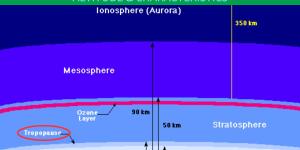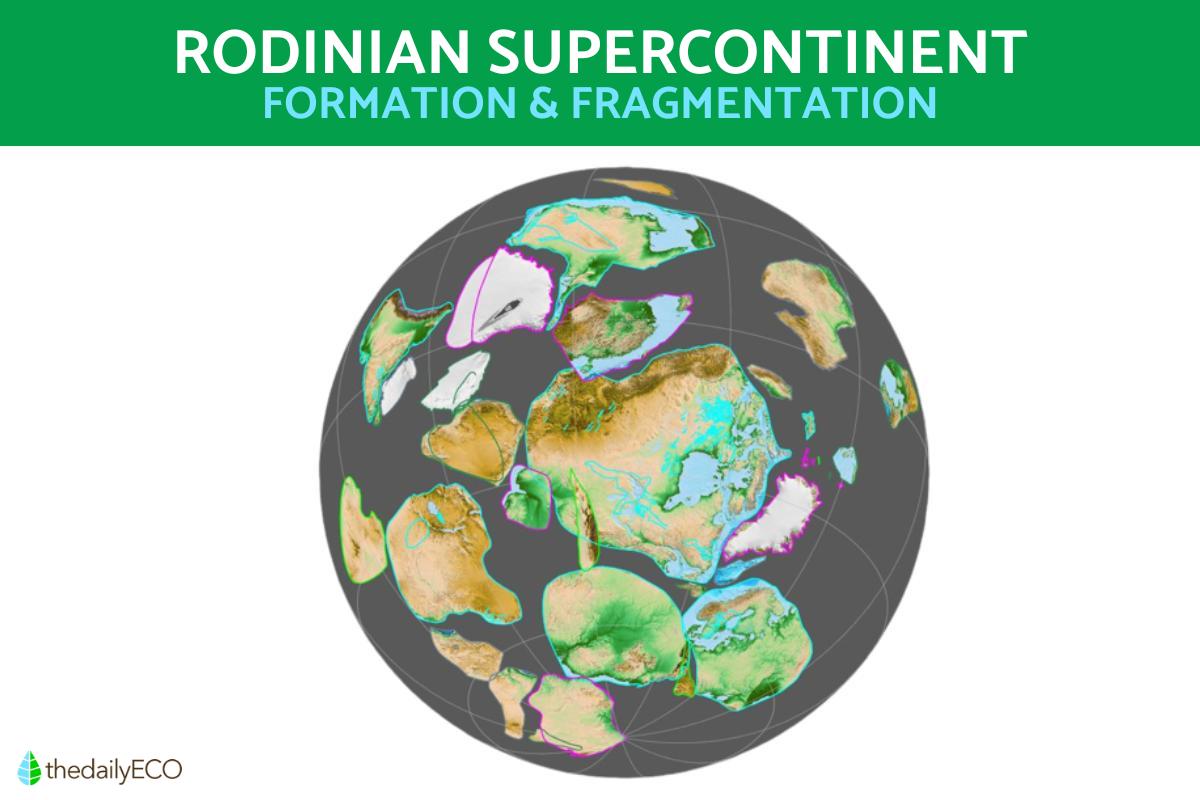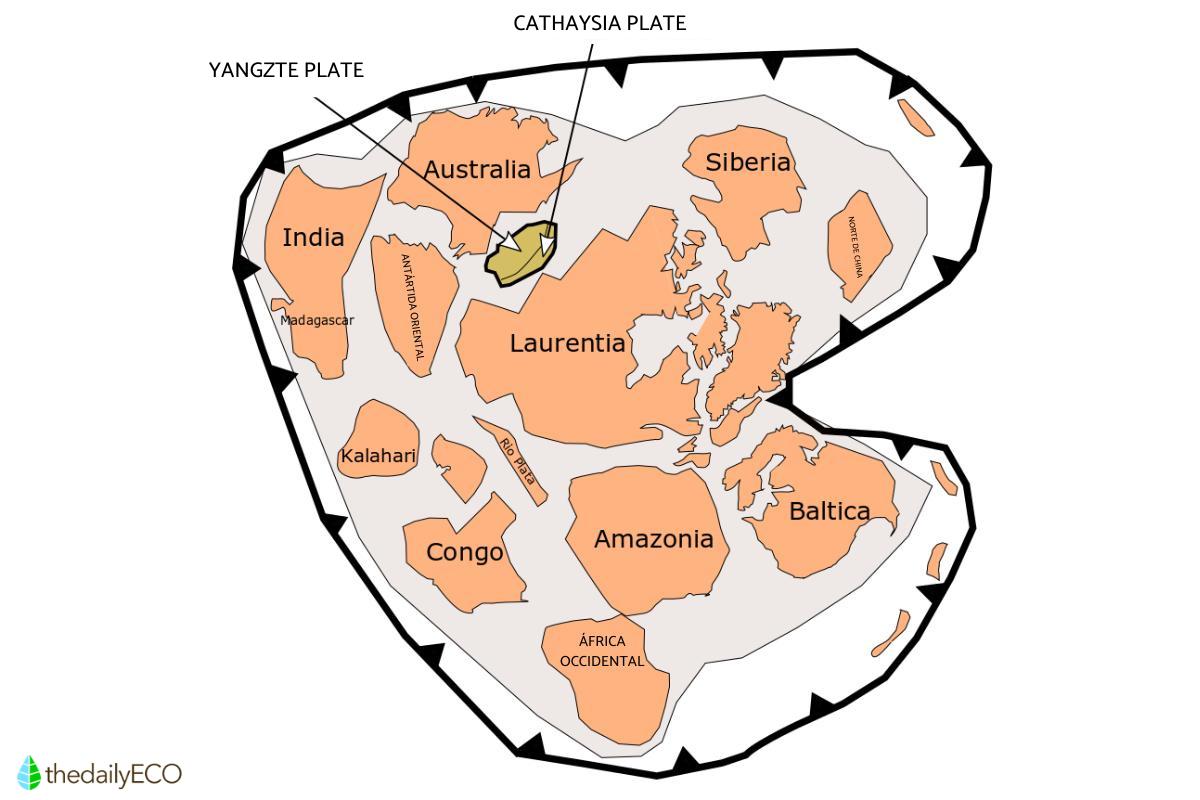What Is the Rodinia Supercontinent?


We may be aware there are 6 continents into which the Earth's land mass is divided. These are America, Africa, Europe, Asia, Oceania and Antarctica. Although this conformation of land appears to have always been this way, our planet has looked very different across the billions of years of its existence. Different continental shifts have occurred and are likely to continue occurring long after we are gone. This has lead to the assemblage and fragmentation of different continental bodies, resulting in various paleogeographic conformations. Rodinia is one of them.
Perhaps the best known supercontinent is Pangea, from which the current 6 continents were divided. There are even older continents than Pangea and thedailyECO looks at one of the most fascinating by asking what is the Rodinia supercontinent? We look both at how Rodinia was formed and how it was later fragmented apart.
Definition of Rodinia supercontinent
Rodinia was a supercontinent that existed during the Neoproterozoic era, somewhere between 500 million and 1.3 billion years ago. The breakup of Rodinia formed the fragments that years later would assemble to form another supercontinent, Pannotia. Pannotia separated again and its fragments reunited to give rise to the supercontinent that preceded the current 6 continents, known as Pangea.
While this seems fairly straightforward, obtaining our knowledge about previous supercontinents is no easy task. The idea that this supercontinent had existed arose in 1970, when geologists managed to reconstruct it through a body of evidence from rocks and fossils, as well as weather and paleomagnetic studies.
Paleomagnetism is the study of magnetic fields recorded in archeological materials. It is thanks to this study that it was possible to identify the paleolatitude (i.e. the location on Earth of this ancient supercontinent) of the fragments that made up Rodinia, although not their longitude. This was determined by means of comparisons with similar fragments.
Some of the features of Rodinia that could be reconstructed are:
- It was a desolate place with no living organisms on the earth's surface, very similar to Mars. The life forms that did exist were found at the bottom of the oceans in the form of bacteria. Learn about one type of bacteria in our article on what are cyanobacteria in biology?
- It is believed that the Earth's temperature at the time of the Rodinia supercontinent was 30 ºC/80 ºF and that the days lasted 18 hours.
- The atmosphere contained high concentrations of CO2 and intense acid rain.
- Apparently, the area of land that makes up the current United States and Canada was in the center of Rodinia surrounded by other continents such as Siberia, Baltic, the Amazon block, India and fragments of Australia.
- Geologists have determined that the Rodinia supercontinent was surrounded by a super ocean called Mirovia.
- The ozone layer was not as extensive as it is today. This meant the ultraviolet light that reached Earth was much greater, making it difficult for life to proliferate.
- Rodinia's conformation is believed to have been responsible for an ice age (about which we explain more below).
Did Rodinia exist before Pangea?
Rodinia existed in the Neoproterozoic era up beginning around a billion years ago. Pangea was a supercontinent present in the late Paleozoic and early Mesozoic eras, about 300 million years ago. This means that Rodinia is older than Pangea.
Learn more about how life on Earth has been able to exist with our article on what is the magnetosphere?
Rodinian supercontinent formation
The formation of Rodinia is not fully known. This is because there are insufficient data to determine its exact characteristics. Geologists have different theories about how the supercontinent of Rodinia was formed, meaning there is no consensus.
It is estimated that Rodinia began to be assembled around 1,300 million years ago and that it took 300 million years to form into its final entity. Prior to the formation of Rodinia, there were several volcanic islands of different sizes arranged on the Earth's surface. Many of them derived from the fragmentation of the previous supercontinent, Columbia.
The assembly would have been produced by accretion and collision of fragments. This means the continental body Laurentia (what would have been the nucleus of Rodinia) increased its surface by the addition of smaller bodies.
One of the paleogeographic studies of Rodinia was reconstructed by Paul Hoffman. He proposed that the Laurentia craton would have at first collided with Baltica, forming a mountain range of about 5,000 km in length and high in altitude. Subsequently, the Antarctic craton would have collided with Laurentia, forming numerous mountains and mountain ranges that connected both continents.
As a consequence, Rodinia was located south of the equator. It was made up of the following:
- Laurentia in the center
- Baltic, Amazonian and West African craton to the south
- Congo craton to the southwest and the Kalahari craton to the west
- Australia, India and Antarctica from the east to the north and northwest
- Siberia to the northeast
See how volcanoes are formed in our related article.

Rodinia fragmentation
Due to volcanic activity and magmatic movements, Rodinia began to break up 750 million years ago. The process of this fragmentation took about half the time of its formation at about 150 million years.
It is believed that the dissolution of the supercontinent did not occur in a single event. Instead, there were two separate events:
- First fracture: occurred near 750 million years ago on the western margin of Laurentia.
- Second fracture: occurred 600 million years ago in the Amazonian and Baltic craton with Laurentia, opening the Iapetus Ocean between them.
The whole process of rupture of Rodinia led to the formation of 8 continents that years later would join again to form the supercontinent Pannotia. It is believed by many that Rodinia produced a series of climatic changes which eventually triggered the biggest freeze the Earth suffered. This hypothesis is known as the Snowball Earth theory and suggests that nearly all of the Earth's surface was covered in ice.
As Rodinia began to break up around 750 million years ago, the paleogeographic position of the supercontinent slowed down the currents of warm water that were directed from the equator towards the poles. This caused the polar regions to begin to freeze. In turn, the ice that formed accentuated the phenomenon because it reflected sunlight from the earth back into space.
The temperatures dropped and the ice advanced to cover the entire earth. It is estimated that temperatures were around -40 ºC/-40 ºF. The oceans were also covered and almost all living species became extinct, with only bacteria and algae from the seabed managing to survive.
Over the years, volcanic eruptions were increasing and CO2 (carbon dioxide) and CH4 (methane) were accumulating under the ice, accentuating the greenhouse effect. As a consequence, there was an increase in temperature and the melting of the ice, ending the freeze. It is this intense sub-ice volcanic activity is believed to have led to more rapid fragmentation of Rodinia.
When a land mass is created, it results in various types of terrain. Discover how the highest peaks occurred with our article on the formation of mountains.
If you want to read similar articles to What Is the Rodinia Supercontinent?, we recommend you visit our Facts about Earth and the universe category.
- History. (nd). The history of the land 11 Rodinia . Available at: https://www.youtube.com/watch?v=Se7-sQsk39Y
- The evolution of the continents throughout the history of the Earth . (nd). Available at: http://www.ccpems.exactas.uba.ar/CDs/CDTierra/contents/1_histo_tierra/hist_tierra_cont/evol_continentes.htm
- National Geographic. (nd). Rodinia. Available at: https://www.youtube.com/watch?v=EB_sbhwc6Ns
- Rodríguez PS (nd). Earth 's Supercontinents . Available at: https://www.uaeh.edu.mx/scige/boletin/prepa4/n8/r6.html
- Vila VA, García Ares C., Lagoa Núñez A., López Díaz C., Martínez Domínguez S. (2015). Snowball Earth . Available at: http://caumas.org/wp-content/uploads/2015/11/Trabajo-Geolog%EDa-5.pdf






